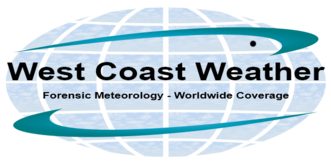Seattle Weather – Snow
By Michael FaginHistorical Weather DataWith 0 commentsWhy is Seattle impacted by any snow
Seattle Weather – Snow? Snowstorms in Seattle are a big deal. Why? Lots of hills and the lack of snow removal equipment. Seattle does not get that often thus minimal snow removal equipment. So an inch of wet snow that forms to ice on steep hills are as difficult to drive in than major snow storms in the upper Midwest and northern East Coast.
Seattle has a reputation for being rainy but is not misleading as many times Seattle is cloudy with light drizzle. Much of the country, especially out east, regularly sees more. The rainiest places in the country, however, are nearby, in the mountains of western Washington and Oregon. Seattle often finds itself in a rain shadow due to the tall, surrounding mountains,which often spare the city from seeing rain or snow even when there are major storms in the nearby mountains.
Lack of Snow Removal Equipment
Snow is not often a substantial contributor to Seattle’s precipitation totals. The worst snowstorms in Seattle stack up to moderately severe Midwestern storms. They’re also far less common. Commonality, however, tends to lead toward extra preparedness, as seen, for instance, in commercial, governmental and residential snow and ice removal operations in the upper Midwest.
Around Seattle, the danger of melting accumulations from a big snowstorm often gets doubled by trailing rains, funneled northeastward in the Pineapple Express. It’s the region’s main source of rain but yields snow only if continental, northern air has prominently dropped Seattle’s temperature. That doesn’t happen often, as freezing temperatures don’t tend to linger long around Puget Sound.Even January’s low temperatures are usually above freezing.
Biggest Snow Storms
December 29th, 1996
One of the most devastating recent snowstorms in Seattle struck on December 29th, 1996. It came 48-72 hours after several inches of snow and ice had already fallen. Snow, wind and ice ruined many buildings, infrastructure and means of transportation. Mid-to-northern Seattle saw 15”-23” of snow.
The threats presented by the storms intensified when both the day’s snow accumulations and the already loosened soil underneath met days of drenching, warm rain, which lead to substantial melting, triggering at least a hundred,possibly more than two hundred crushing mudslides and avalanches. The storms collapsed roofs at Port of Edmonds Marina and damaged hundreds of boats ,actually having sank a couple hundred. Several other marinas also reported significant but less tragic damages.
Rain on Snow
At Sea-Tac airport, over a half inch of rain fell the next day and an additional,saturating 1.30” arrived on New Year’s Eve. Over 5’’ of water equivalent precipitation dropped in the last six days of 1996 and an additional 2’’ came the following two days. Not all snowstorms in Seattle are followed by heavy rains but the threat is far from foreign around the turn of the year. Written by Meteorologist Geoff Linsley
